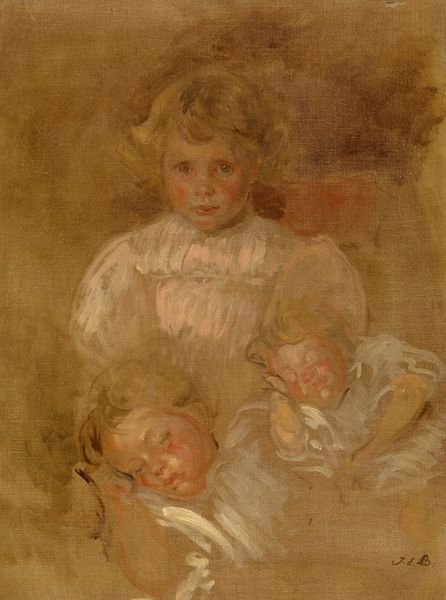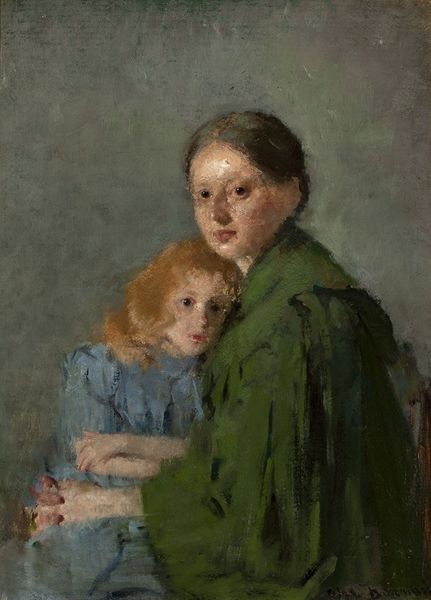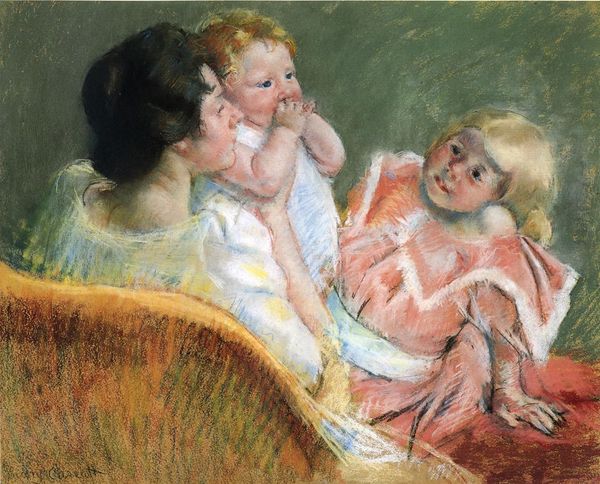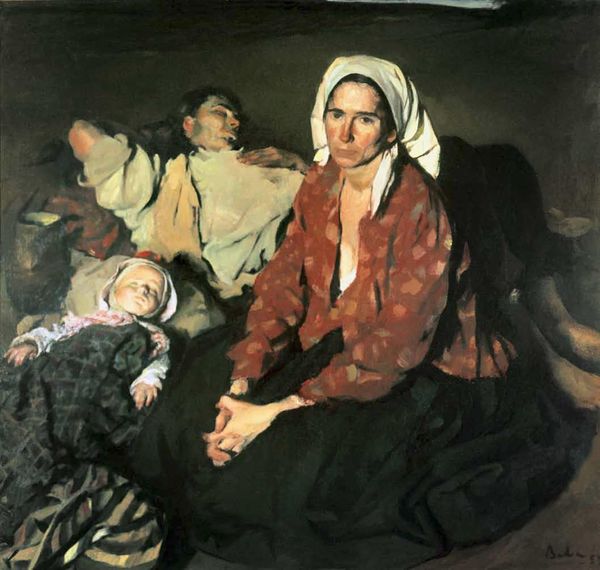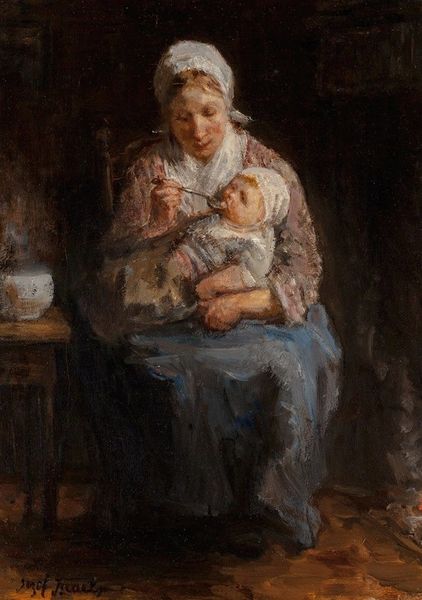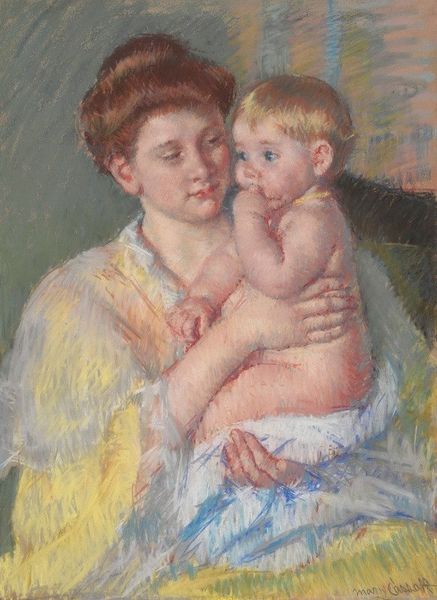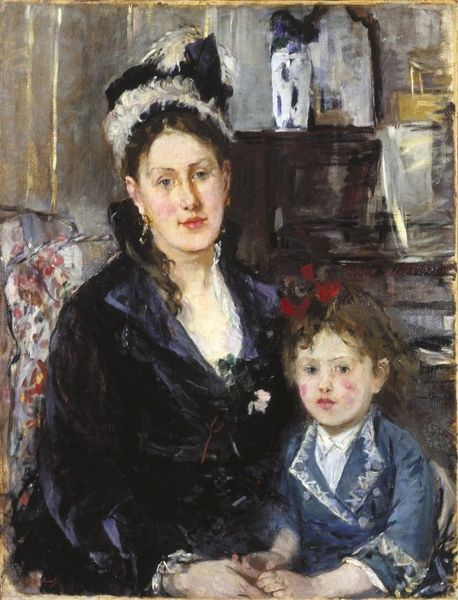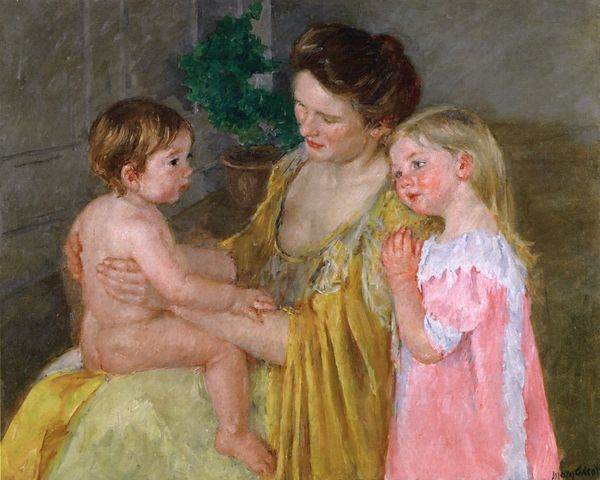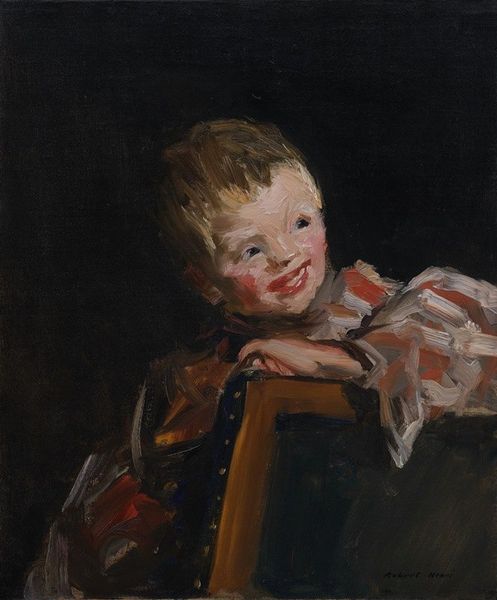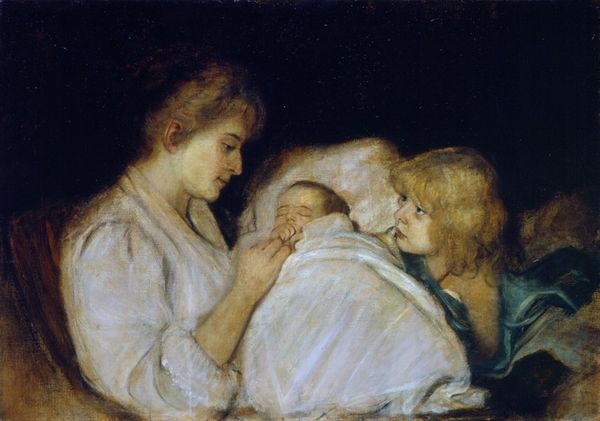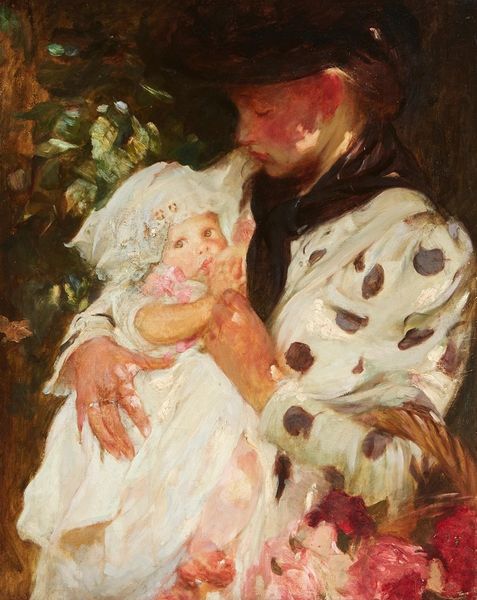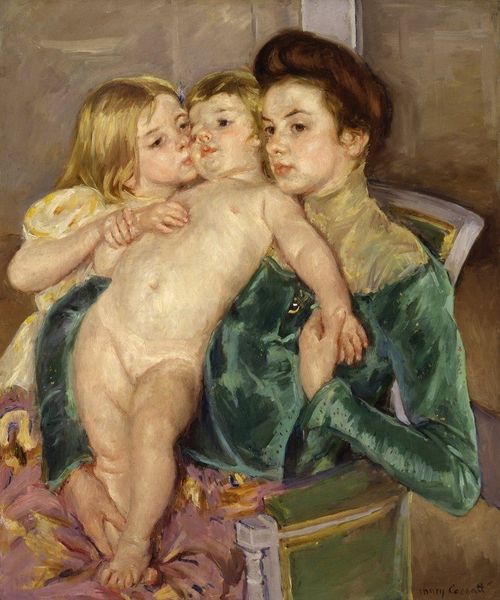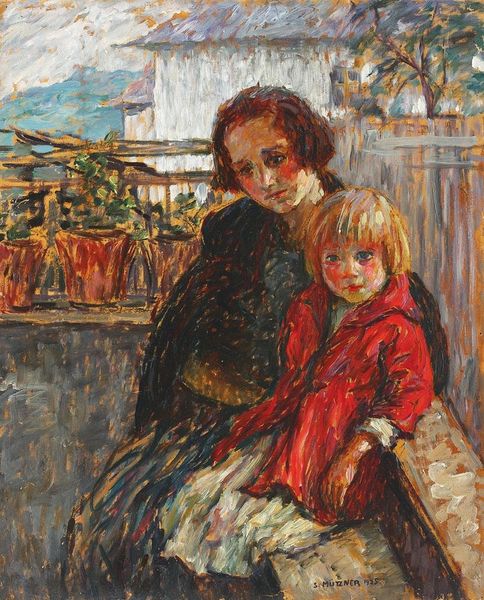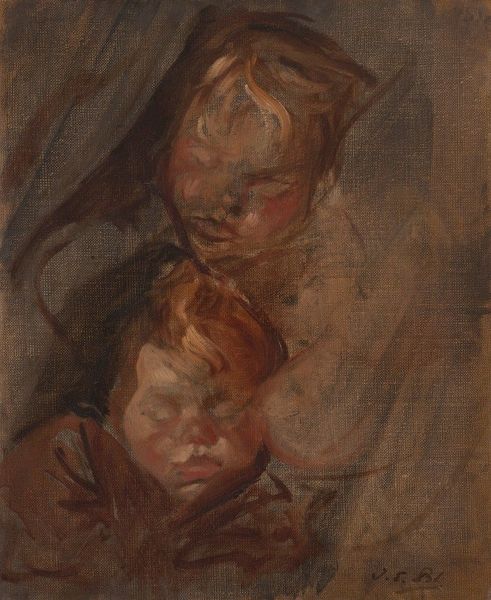
Copyright: Public Domain: Artvee
Alfred Stevens painted ‘The Widow’ with oil on canvas, capturing a moment of intimate domesticity. The paint is applied loosely, gesturally, in a way that was innovative for its time, breaking with more academic traditions. What strikes me most is how the materiality of paint allows Stevens to convey both the weight of the woman’s sorrow and the lightness of her children’s innocence. The thick impasto of her dark clothing and the somber background contrast with the delicate rendering of the children's faces and clothes. It’s a beautiful contrast. The technique of oil painting itself carries social meaning. It had long been the medium of the wealthy elite. The cost of pigments, brushes, and canvases meant that only a privileged few could afford to practice it. But by the 19th century, oil paint was becoming more accessible, and Stevens and other artists were using it to depict everyday life, to elevate the quotidian. So, when we look at ‘The Widow’, we’re not just seeing a portrait of grief. We’re seeing the way that artistic practices and materials are intertwined with social and economic change. It urges us to look past the traditional hierarchy of artistic expression, and see value in how material practices can reflect the realities of human experience.
Comments
No comments
Be the first to comment and join the conversation on the ultimate creative platform.
